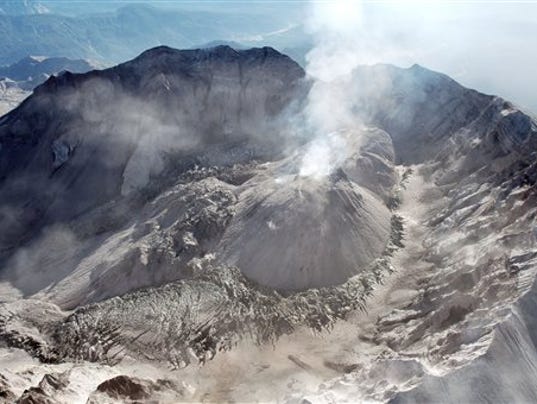
http://www.statesmanjournal.com/story/news/2014/09/27/mount-saint-helens-eruption-prediction-washington/16351951/
A decade ago this week, Mount St. Helens awoke from its dormant state and forced media and onlookers alike to flee to Johnston Ridge, a road close to the volcano with views of Mount St. Helen's crater. Ashes and steam shot thousands of feet into the air for several weeks, causing the area near the volcano to be closed due to safety hazards. For the next three years, another lava dome would emerge in the crater, ultimately rising 1,076 feet above the floor of the crater. The eruption from ten years ago is one that begun the second of two dome building phases. The shape is still changing despite being inactive since 2008. Five miles below the volcano, there are signs that the magma chamber that fuels eruptions is "recharging." This process is part of an ongoing repeating pattern with Mount St. Helens, as over the centuries, it has violently erupted and gone through dormant periods of rebuilding its shape in order to erupt again. The crater will fill in and the shape will return to the one prior to the 1980 eruption. Scientists believe that Mount St. Helens will erupt similarly to 1980 within years or decades.
This is simultaneously interesting and frightening for those who live in the Pacific Northwest or even those who simply read articles on the volcano. It'll be interesting to see how geologists will find ways to predict the next "big" eruption of Mount St. Helens. Hopefully these new technologies are enough to properly warn populations in that area and evacuate them as efficiently as possible. Furthermore, when it finally erupts, it will be interesting to watch how it affects the area nearby.
This isn't the first article I have read about volcano risings and its pretty frightening. The trajectory of a volcano explosion is way farther than the immediate area, the affects spread to the surrounding borders.
ReplyDelete